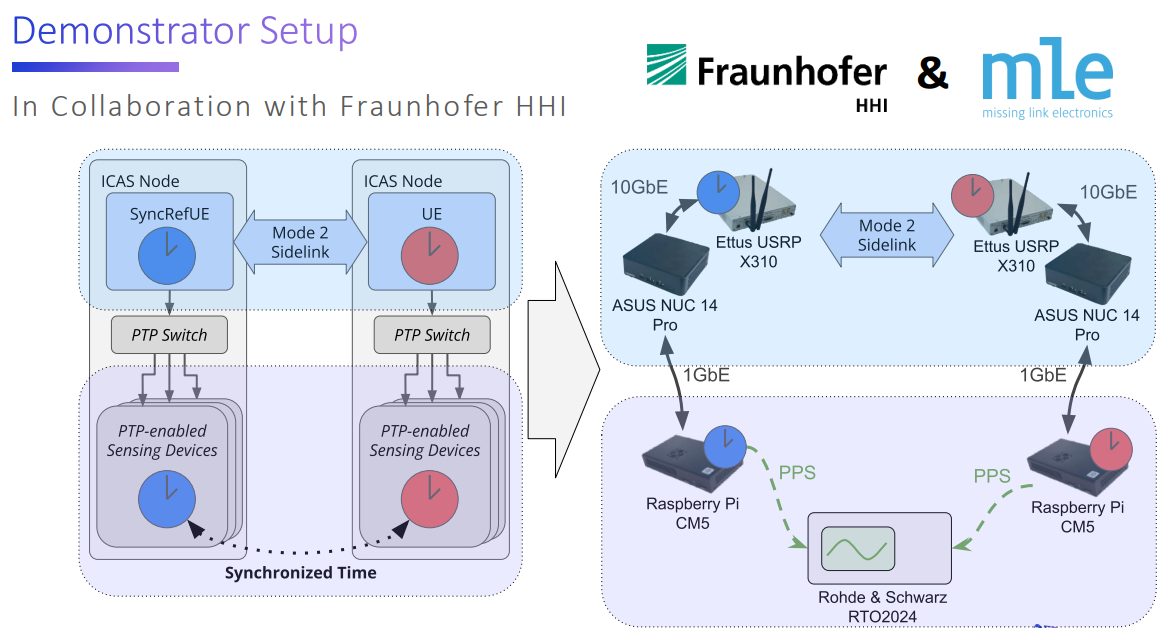
Berlin 6G Conference is the annual networking event of the German 6G Program, organized by the 6G Platform Germany, taking place at the Berlin Congress Center (BCC) from July 1-3, 2025. There, MLE presented “Enabling PTP-based Time-of-Day Synchronization via 5G Sidelink.”
GNSS is widely used for positioning and synchronization—particularly in applications, such as vehicles and drones, where merging recorded radar data and coordinating multiple nodes over-the-air is essential. Accurate time-stamping is crucial to ensure data integrity, which requires a reliable and common time source. However, GNSS connectivity can be limited or completely unavailable in challenging environments like tunnels or urban canyons, making precise synchronization difficult.
In this presentation, MLE showcases our approach to synchronize devices using PTP-based application layer time synchronization over 5G sidelink. We walk through the approach and implications of correlating PTP messages with 5G PHY layer frame timing, and briefly touch on a method for further improving the timestamp accuracy. In the end, we present our proof-of-concept demonstrator setup developed in collaboration with Fraunhofer HHI, along with initial experimental results, demonstrating microsecond-level time synchronization accuracy via PTP over 5G sidelink. Notably, this approach relies purely on existing mechanisms and requires no additional modifications to future 6G standards.
